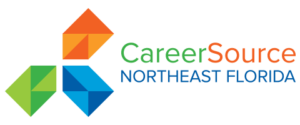What small-business owners need to know about PPP loan forgiveness (Courtesy of the Jacksonville Business Journal) — The Small Business Administration’s Paycheck Protection Program was as massive as it was popular, dispensing a total of 11.8 million forgivable loans for nearly $800 billion across 2020 and in early 2021. But, as those loans start to come due, small businesses need to stay abreast of the most recent developments and rules to make sure they maximize every dollar, particularly when it comes to PPP loan forgiveness or the interplay with potentially lucrative employee retention credits.
Here is a look at some of the most recent developments in the PPP forgiveness arena and what small businesses need to know to meet deadlines and secure forgiveness from these SBA loans.
PPP forgiveness deadlines loom. Small businesses will have to start making payments soon.
Small businesses that got PPP loans in 2020 need to apply for forgiveness soon – otherwise they will have to start making payments on the loan plus interest. The PPP loans will automatically convert to a standard loan at 1% interest if a small business does not apply to the SBA for forgiveness within 10 months of the end of the covered period under which they had to spend the money.
For some businesses early in the program when it launched in April 2020, there was an eight-week covered period, which would put that deadline in the middle of July. For most loans operating under the more popular 24-week covered period, that could mean a deadline in September.
And while small businesses can apply for forgiveness after the loan starts being repaid and get the loan forgiven, there is no formal guidance that says the small business will get those payments refunded to them. While that seems to be SBA’s intent and has been communicated by the agency in informal discussions with the lending community, business owners that apply for forgiveness can skip any potential issues, said Justin Elanjian, partner-in-charge of the Paycheck Protection Program and the Employee Retention Credit program at Atlanta accounting firm Aprio, in an email.
The SBA has withdrawn a form that made $2 million and up loans harder to forgive.
The SBA officially withdrew the use of a controversial Paycheck Protection Program loan questionnaire earlier this month that critics say had slowed the forgiveness process for larger loans. The notice came in the form of a lender update in July that stated SBA was withdrawing the use of the form “effective immediately.”
“Loan Necessity Questionnaires that SBA has previously requested are no longer required to be submitted to SBA. If you have an open request for additional information related to the Loan Necessity Questionnaire, please close the request in the platform and submit the loan back to SBA,” the SBA said in the notice. “Effective immediately, SBA will no longer request the Loan Necessity Questionnaires (SBA Form 3510 and 3511) for any PPP loan reviews.”
The “loan necessity questionnaire,” first rolled out in November, focused on the “good faith” certification that businesses had to make when applying for a PPP loan of $2 million or more, but it asked for significant documentation about how businesses subsequently did after receiving the loan, among other things. The Associated General Contractors of America ultimately sued the SBA, saying the questionnaire was developed in secret and without public input.
PPP loans made in 2021 will face an easier forgiveness process.
Part of the ongoing issue with PPP loan forgiveness for loans made in 2020 was the ever-shifting series of rules and amendments the SBA had issued over time, including simplified forms, updated guidance and new regulations. But now that it is largely complete, loans made in 2021 will face a much easier forgiveness process, according to Chris Hurn, founder and CEO of Fountainhead.
“I think it will go more smoothly because now we have more than year under our belt,” Hurn said, adding that SBA essentially built the forgiveness process from scratch over the last year. “It should go much much smoother going forward. It’s not this big scary unknown from the borrower perspective.”
And as the SBA shifts more and more of its resources from originations — which the agency stopped doing at the end of May — to forgiveness, the time frame in which PPP loans should be forgiven will speed up too, he added.
The SBA is working on a direct PPP loan forgiveness portal
The agency is also planning to launch a new Paycheck Protection Program loan forgiveness portal that would allow at least some small-business owners to apply for forgiveness on an SBA platform instead of starting with their lender.
The portal could help small business owners deal with a non-responsive lender, said Erik Asgeirsson, president and CEO of the Association of International Certified Professional Accountants in an online Town Hall on July 8.
It could also help speed up the loan forgiveness process if lenders are dragging their feet.
“The SBA is looking to launch their own portal,” Asgeirsson said. “It seems like they are going to have a direct forgiveness tool, and that’s what I would expect if the lender is no longer in existence — that would be a great option.”
That new portal is on the horizon, SBA Administrator Isabel Guzman told the Philadelphia Business Journal.
“We are in the process of working through that and hopefully we’ll be rolling that out very soon,” Guzman said. “We know that those businesses were seeking a forgivable loan product. That goes for business around the country. They used their proceeds to retain their workforce and survive during this time, and we want to make sure it is forgivable for them and they know how to fill out the forms properly, and in this case, create a platform that can simplify it.”
